Give your bike a regular once-over to keep it running smoothly and make sure that everything is safe. Here's how...
You need to look after a bike to keep it working smoothly and efficiently - and it's really not that difficult.
Get into the habit of quickly checking over the key parts before each ride, just to make sure everything is as it should be; catch small problems before they turn into big problems and you'll save yourself a whole lot of time and money in the long run.
Do you need to revolutionise your commute?
Shop Now
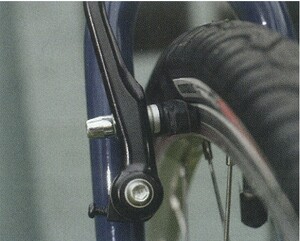
1. Brakes
Pull the brake levers to make sure the blocks bite early enough to give you the stopping power you need. If not, fine-tune the cable adjuster on the brake calliper or lever to bring the blocks in closer to the wheel. Check that they hit the wheel rim in the middle of the braking surface and that the cables aren't frayed.
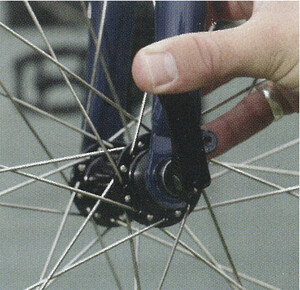
2. Wheels
Spin the wheels to check they're both round and true - any more than a couple of millimeters of side-to-side wobble and the spoke tension needs adjusting. Check the hubs spin smoothly too - if not, they need adjusting - and that the quick releases are tight.
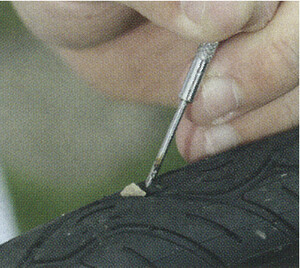
3. Tyres
Remove any glass or stones that are embedded in the tyre tread to avoid punctures. Check the tread for excessive wear and the sidewalls for bulges - if you find any, it's time for a new tyre. Make sure there's enough air in the inner tubes and, if necessary, top them up.
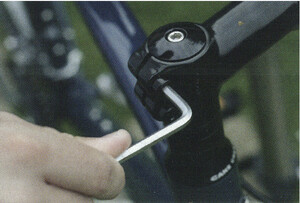
4. Headset
Pull the front brake on hard and rock the bike back and forth, checking for any movement in the headset bearings. If there is any, undo the bolts on the side of stem, tighten the bolt on the fork's top cap slightly, and re-tighten the stem bolts. Also. pick the front end of the bike off the floor and check that the handlebar turns smoothly.
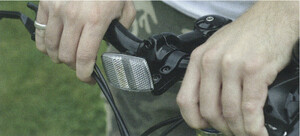
5. Handlebar and stem
Check that the stem bolts haven't loosened off. Hold the bike steady and try to twist the handlebar forward in the stem clamp. Then hold the front wheel between your knees and try to twist the handlebar sideways, as if you were turning. If there's any movement, tighten the Allen bolts.
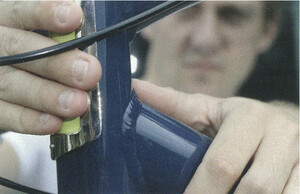
6. Frame and forks
It's very unlikely, but just check the frame and forks over for any cracks, especially if you've hit any big potholes. The danger areas are at the front of the bike (just behind the head tube) and around the bottom bracket.
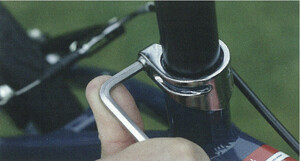
7. Saddle and seat post
Grab the saddle and try to twist it sideways and move it up and down. If there?s any movement, check the bolts that hold the seat post in the frame and the saddle on top of the seat post. It?s just a question of tightening them up.

8. Gears
Check the shifting between gears. If the chain doesn't move up to a larger sprocket easily, you need to tighten the cable slightly by screwing the barrel adjuster on the rear mech anti-clockwise. If the chain doesn't move to a smaller sprocket easily, loosen the cable by turning the adjuster clockwise.
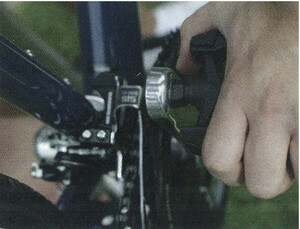
9. Bottom bracket
If there's any ticking or creaking as you pedal, it could be that your bottom bracket has worn. Drop your chain off the smallest chain ring and turn the cranks by hand. If it doesn't feel smooth, the bearings have worn and need replacing. Check your pedals spin freely on their axles too. If not, they need adjusting.
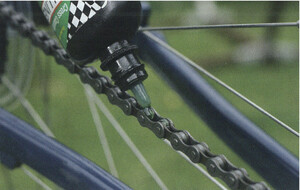
10. Chain and relubing
Clean the chain regularly with de-greaser, a stiff brush and plenty of water, and then re-lube it. Run the chain backwards as you apply the lube, making sure that every individual link gets its fair share, and wipe off any excess with a rag. Following a wet ride or after you've cleaned your bike, make sure that the moving parts are well lubricated. Lube the pivot points on the brakes and the derailleurs, and the cables where they meet the cable stops. Obviously, keep the lube well away from the braking surfaces.

Comments: